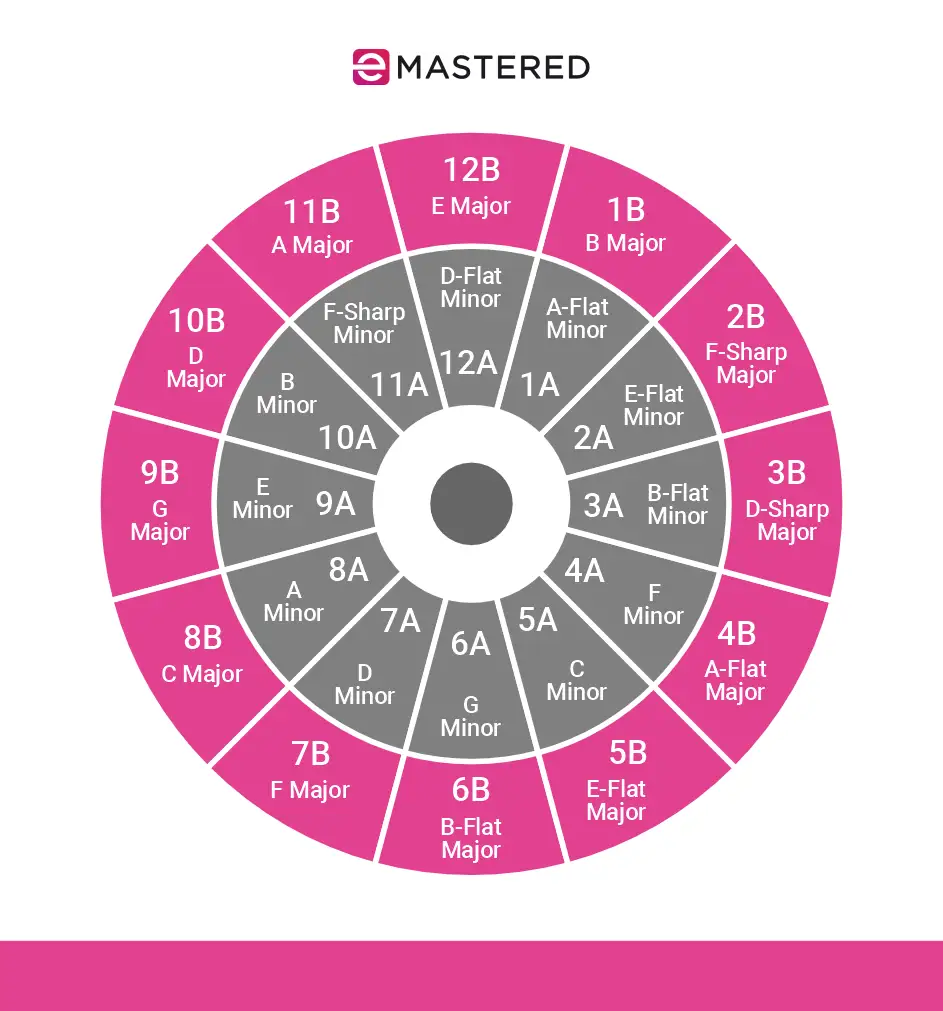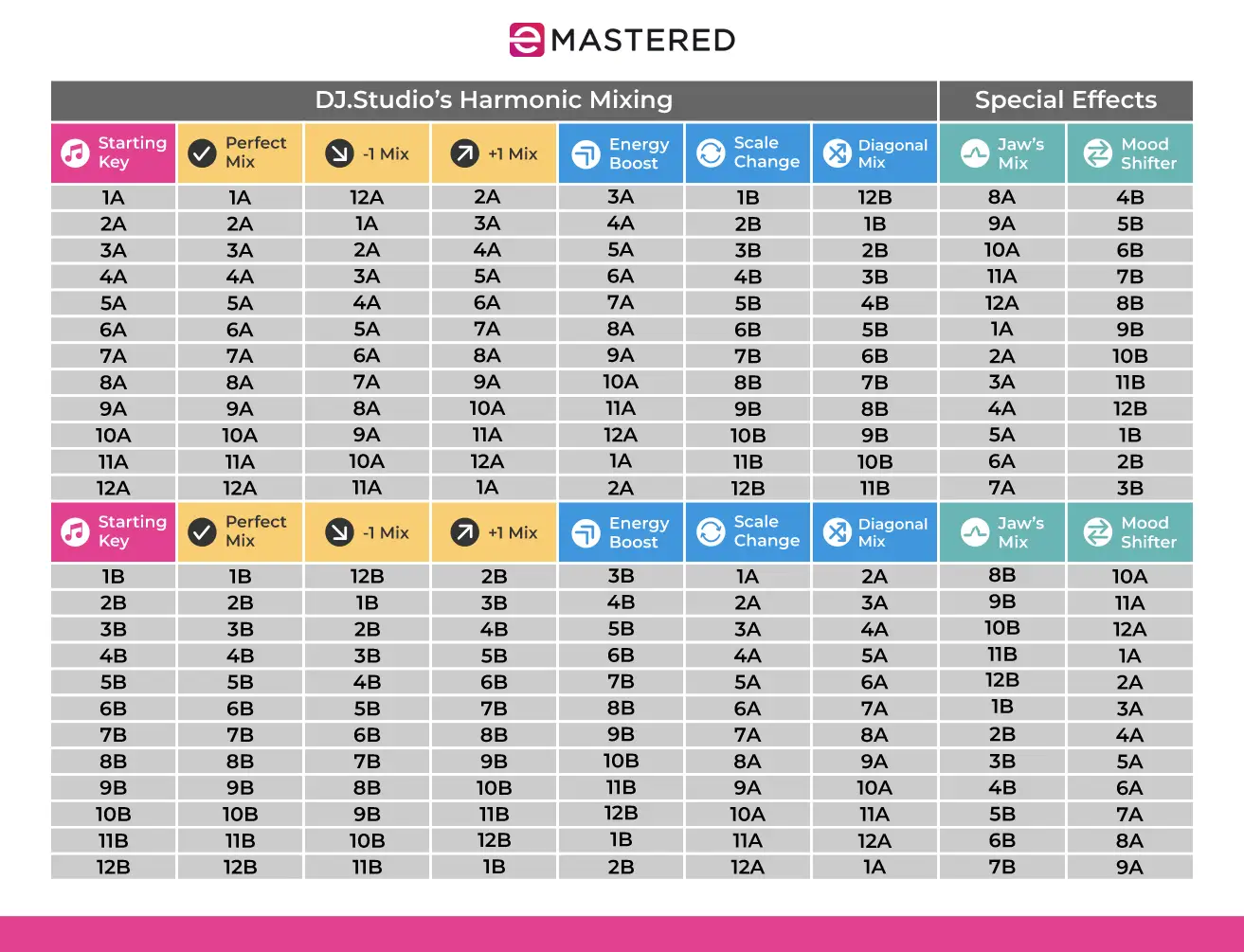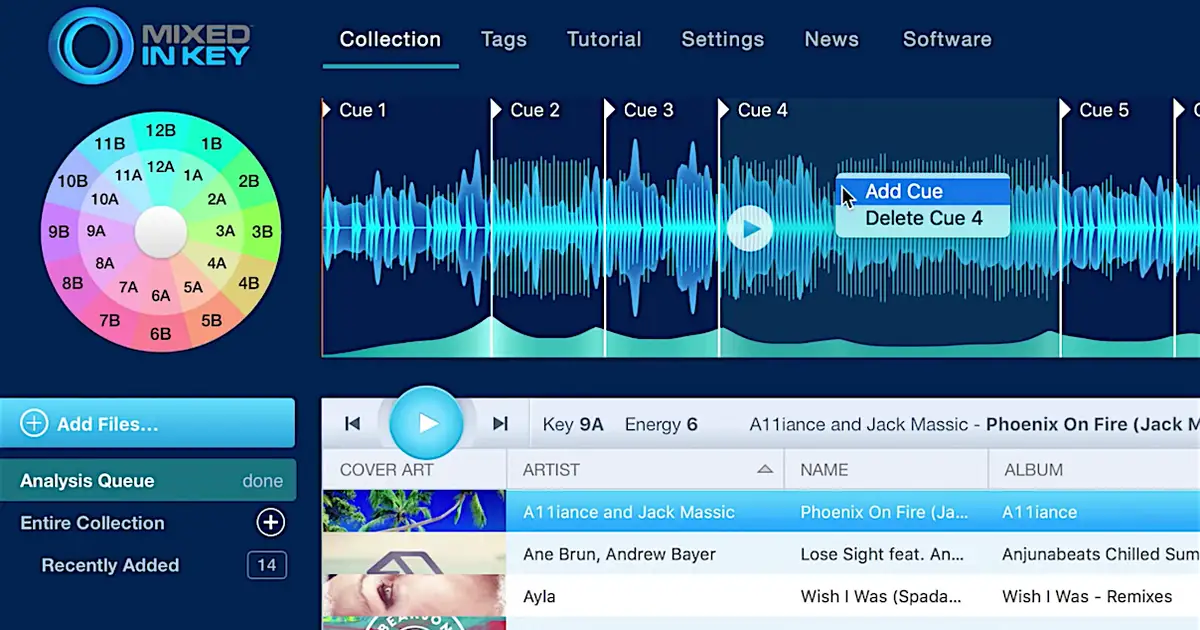The Camelot Wheel might sound like something out of a medieval fantasy, and for DJs, it kind of is a holy grail. It’s a super handy system that helps you mix your tracks in key, which is crucial if you want your set to flow smoothly and keep the crowd going. If you've ever experienced it, you know that nothing kills the vibe faster than a harmonic trainwreck as a DJ tries to poorly transition between two tracks at a show.
Mixing in key is truly what separates the amateurs from the pros. Unfortunately, it’s a skill that a lot of DJs tend to skip over, thinking they can just wing it. But trust me, once you get the hang of it, you’ll notice how much cleaner and more cohesive your sets become.
So, if you’re ready to step up your game and keep the dance floor moving without any awkward transitions, stick around.
What Is The Camelot Wheel?
The Camelot Wheel is a DJ’s best friend when it comes to mixing in key. Better yet, you don't need any music theory experience (though I would eventually recommend it).

In reality, it's a simplified version of the circle of fifths, but instead of dealing with confusing key signatures, you’re working with easy-to-remember labels like 8A or 2B. It’s a system designed to help you keep your sets harmonically tight with minimal brainpower.
Each key on the Camelot Wheel has a unique relationship to the others. For example, if you’re in 8A, you can smoothly transition to 7A, 9A, or even 8B without causing any harmonic clashes. The whole purpose of the Camelot Wheel is to make your life easier. Instead of spending hours learning the ins and outs of the circle of fifths, you can just follow the labels on the wheel and keep your transitions smooth.
Many professional DJs swear by this system, and it’s built right into powerful DJ software like Mixed In Key and DJ.Studio .
How Does the Camelot Wheel Work?
So, how does the Camelot Wheel actually work? Imagine a pizza with 24 slices, each slice representing one of the available keys in music. Now, instead of toppings, each slice is labeled with a Camelot key, like 8A or 2B, which corresponds to a specific musical key. The Camelot value (that little number before the letter) tells you where you are on the wheel, making it super easy to figure out your next move.
The wheel is split into two concentric rings. The outer ring (labeled with a ‘B’) represents the major keys, while the inner ring (labeled with an ‘A’) is for the minor keys. When you know the key of your track, the wheel does the heavy lifting, helping you figure out which other keys will blend smoothly with it.
For example, if your track is in 8A (A minor), you can easily shift to 7A (D minor), 9A (E minor), or even hop to 8B (C major) without breaking a sweat.
The Camelot Wheel In Use
Using the Camelot Wheel gives you a secret weapon for choosing your next track during a set. It takes the guesswork out of finding the right musical key and makes sure you keep the vibe going without any awkward clashes. Whether you’re trying to build energy, change the mood, or keep things steady, you can look to the Camelot Wheel.
Let’s say you’re starting with a track in 8A (A minor). Here’s what your next move could look like:
- 7A (D minor): Want to keep things smooth and cohesive? This is your go-to. It’s a natural step down that maintains the vibe without any jarring shifts.
- 9A (E minor): Looking to build some energy? Moving up to 9A will give your set a little boost, adding some tension and excitement without going overboard.
- 8B (C major): When you're ready for a mood change, switching from minor to major can brighten things up. It’s great for lifting the room and bringing in a more upbeat feel.
- 8A (A minor): No rules against staying in the exact same key. If your current track is killing it and you want to keep the momentum, another track in 8A will do the trick.
Each of these moves can create a different vibe, depending on whether you want to ramp things up, wind them down, or just shift the mood.
Changing Vibe and Energy With The Camelot Wheel
Beyond finding a key that works, the Camelot Wheel can also help shape the vibe and energy of your set and control the mood on the dance floor. The key you choose next doesn’t just need to harmonize, it can also set the tone for what’s coming up.
This is because different keys relate to each other in unique ways. Some transitions will feel seamless (especially if you're staying in the same key), while others can kick the energy up a notch or bring it down a bit.

The table above gives you a roadmap for how these keys interact on the Camelot Wheel and how you can use that to your advantage.
Tips for Using The Camelot Wheel
Now that you’ve got a handle on the Camelot Wheel, let’s talk about some practical tips for weaving it into your DJ sets.
Take Advantage of Key Detection Software
None of this Camelot Wheel magic is going to help you much if you don’t know what key your tracks are in to begin with. But don’t worry, there’s no need to guess or start trying to figure it out by ear. We’ve got key detection software for that, and it’s pretty incredible.

One of the most popular tools out there is Mixed in Key. This software uses a high-end key detection algorithm , analyzing your tracks and figuring out exactly what key they’re in. It also assigns a Camelot Wheel value to each track and embeds that info right into the metadata. This means that when you import your tracks into your DJ software from Mixed In Key, the key information shows up as a comment, ready for you to use.
Not only does this make mixing in key a breeze, but it also helps keep your library super organized. You’ll know at a glance which tracks work together, saving you from any awkward transitions.
Experiment With Your Set
One of the best parts about getting comfortable with the Camelot Wheel is the freedom it gives you during your set. There's a beauty to not having to constantly check the metadata for every track.
You can just mix on the fly, letting the almighty spiritual harmonic flow guide you. That’s the beauty of knowing your keys and having the confidence to mix in real time.
I highly recommend using the Camelot Wheel to sort your song collection and experiment with different transitions ahead of time. When you’ve already done the legwork and know which tracks work well together, you can let loose during your set and focus on the vibe, not the technical details. It’s a great way to nail your pacing and structure, ensuring that your set builds up or cools down just the way you want it to.
If you’re looking to take things even further, consider using an AI stem splitter like Nuo Stems . This tool lets you isolate different elements of a track, like vocals or drums, so you can get even more creative with your mixes.
Don't Get Obsessive with Harmonic Mixing
While the Camelot Wheel is a fantastic tool, it’s important not to get too obsessed with it. No key detection tool is perfect. There are times when you’ll need to trust your ears and make adjustments on the fly. Some tracks don’t even have a clear key or are intentionally experimental and dissonant, throwing the whole harmonic mixing rulebook out the window.
Plus, some songs have intros and outros without any melodic instruments, which gives you a lot more flexibility than the Camelot system might suggest. For example, a track with just a drum groove in the intro can mix into almost anything, regardless of key, because there’s nothing clashing harmonically.
So while the Camelot Wheel is an awesome guide, don’t let it dictate every decision you make. Sometimes, breaking the rules can lead to some pretty incredible mixes.
Nailing Down Harmonic Mixing with the Camelot Wheel
Just because harmonic mixing is a big deal doesn’t mean you have to follow it to a teey. You don’t need the Camelot Wheel or Mixed In Key to be a great DJ, they're just some of many tools in your arsenal. Plenty of amazing DJs mix purely by feel, relying on their instincts and knowledge of their tracks to keep the dance floor moving.
That said, the Camelot Wheel can be incredibly helpful, especially if you find that it clicks with your style. It’s like having a roadmap for your sets, so you can navigate transitions with a bit more confidence.
But remember, it’s there to support you, not to box you in. Feel free to experiment, bend the rules, and trust your gut. After all, at the end of the day, it’s your creativity and connection with the crowd that makes your set memorable. The Camelot Wheel is just one way to help you get there.





